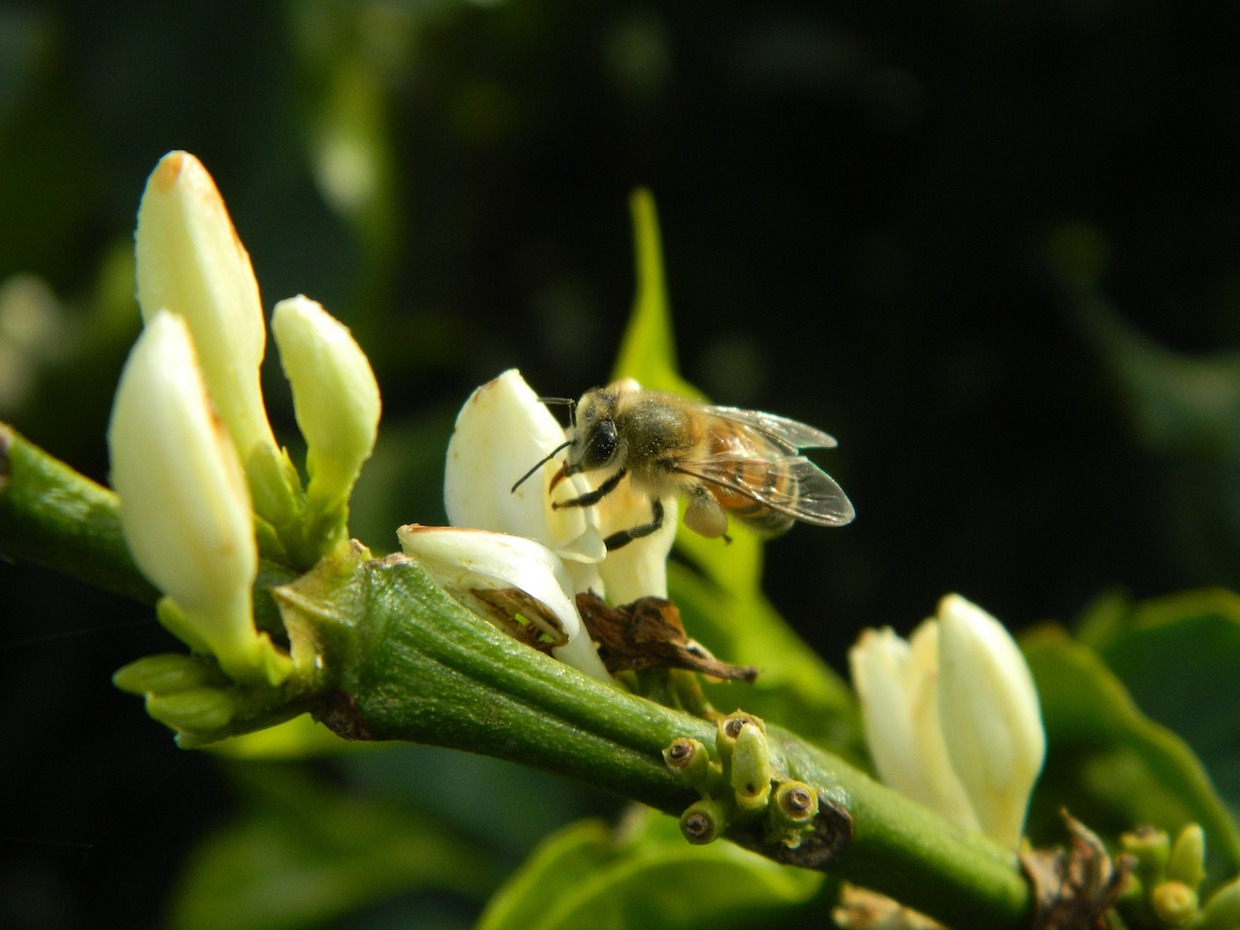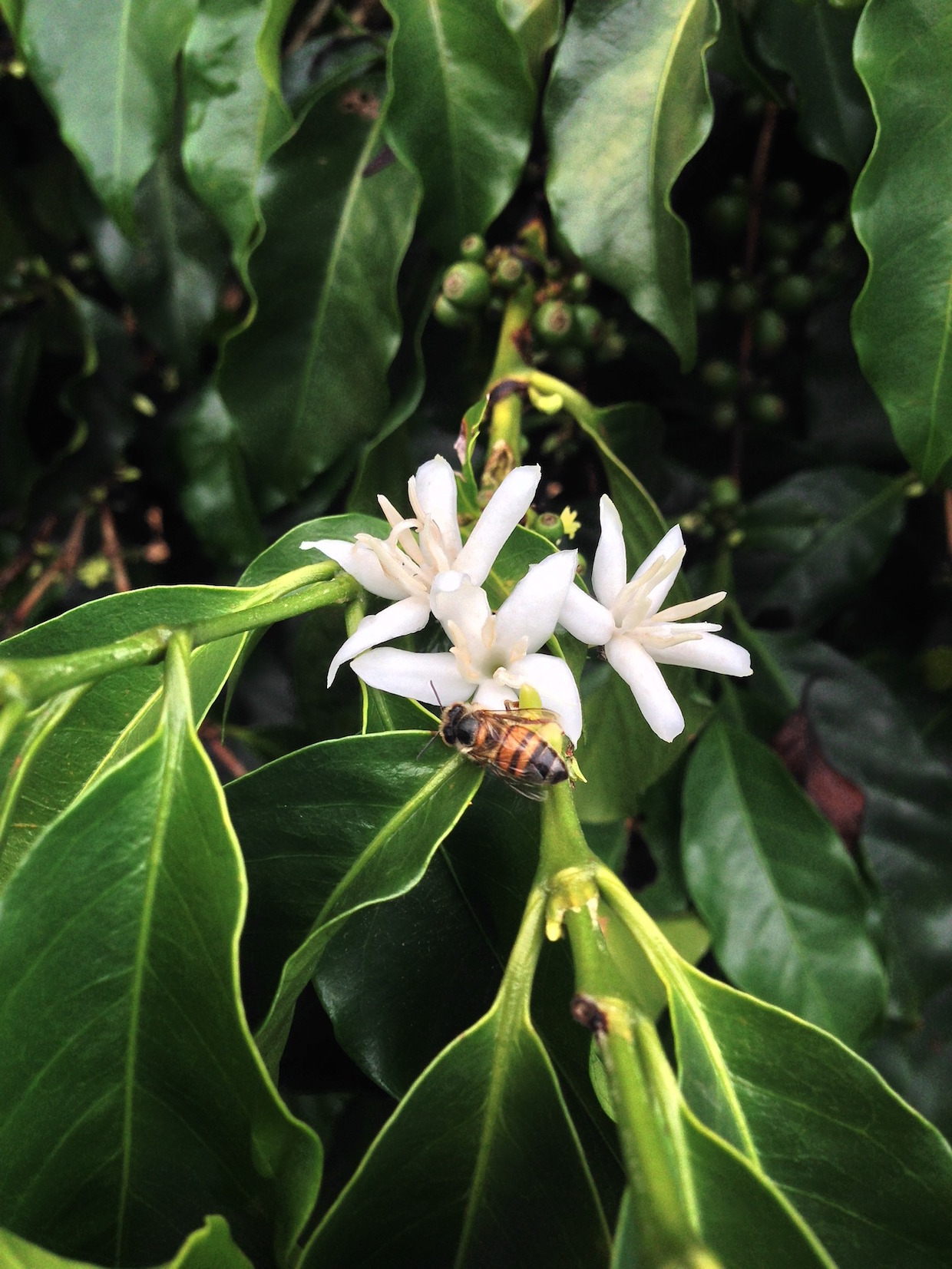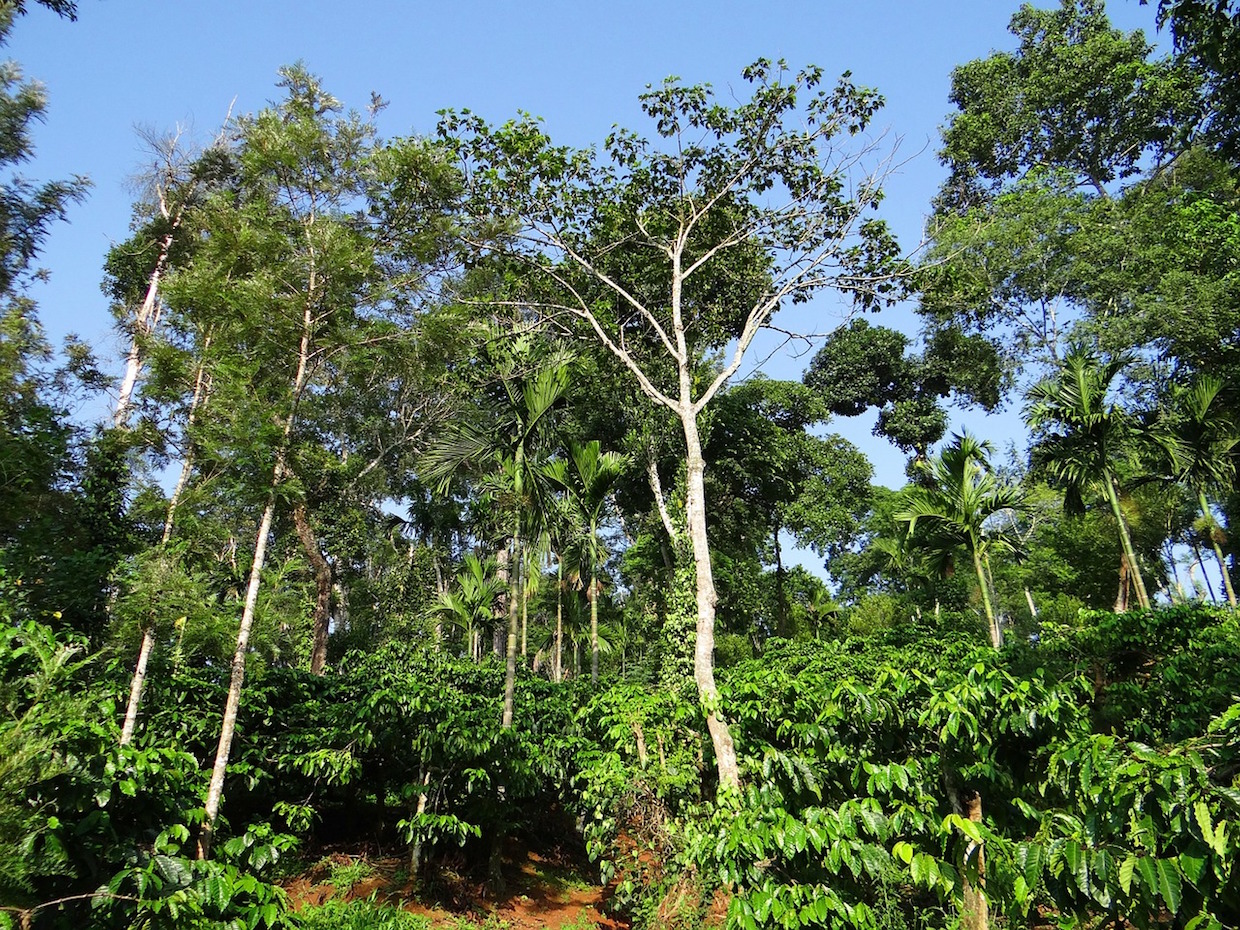From friends meeting over cappuccino in the local cafe to students pulling all-nighters, we humans count on coffee to put zip in our lives. And around the world, from Brazil to Ethiopia to Vietnam, small farmers depend on the aromatic bean for a livelihood.
But a warming climate could stir up the coffee world.
Changes in temperature and rainfall may reduce coffee production in some areas, while making new places suitable for the crop. Climate change could also affect bees that pollinate the bushes that produce the little red beans that jolt millions awake in the morning.
There’s some good news for coffee lovers, though: maintaining healthy forests near those crops could help keep the buzz in your morning joe, according to a new study.
“At a time when agricultural production is threatened by climate change, the ecosystem services provided by forests — in this case, pollination — can help farmers cope and adapt,” says Bruno Locatelli, an expert on ecosystem services and climate change adaptation at the Center for International Forestry Research (CIFOR) and a co-author of the study.
Other studies have shown that climate change is likely to affect agriculture. Some farmers may have to shift crops to higher ground, while others may need to change to other products that are more suitable to their new growing conditions.
But few studies have examined the combined impacts of climate change on crops and the ecosystem services important to farmers, says Pablo Imbach, a climate and ecosystems scientist at the International Center for Tropical Agriculture (CIAT).
While people generally associate forests with ecosystem services such as maintaining water quality or moderating temperatures, their role as a home for bees often flies under the radar, Imbach says.
“We wanted to take a different approach,” he says. “Our idea was to look not only at how conditions suitable for coffee crops might change with climate change, but how that would couple with changes in ecosystem services—pollination services, in this case.”
Bees Give Coffee a Boost
Because arabica coffee, which accounts for two-thirds of the world’s coffee production, is self-pollinating, it technically does not need bees at all, Imbach says.
But bees, especially native species, give the plants a boost. As the number of bee species — called “species richness” — found on a coffee farm increases, so does the farm’s productivity.
The plants set more fruit, the fruit weight is higher, and yield is greater.
With climate change in Latin America, though, the places where coffee is grown and where bees thrive today could shift in the future. In a region where 80 percent of coffee crops are grown on plots of less than four hectares, that could have a big impact on small-scale, low-income farmers.
Areas currently suitable for coffee production in the region will shrink by 73 percent to 88 percent under scenarios of moderate to high warming, according to the study, which examined the impact of 19 climate variables on areas suitable for coffee crops and 39 bee species in Latin America.
Meanwhile, up to 30 percent of areas suitable for coffee production in the future will be places where coffee is not currently cultivated, giving other farmers a chance to grow an important cash crop.
In 10 percent to 22 percent of future coffee-producing zones, coffee suitability will increase and the number of bee species will increase, an effect known as “positive coupling.” That is especially true in Central America, the study found.
The opposite — “negative coupling”, or a decrease in both coffee suitability and bee species richness — is likely to occur in 34 percent to 51 percent of future coffee-producing zones.
About one-third of future coffee-growing zones show an increase in coffee suitability and a decrease in bee species, while no more than 10 percent show more bee species in areas that lose suitability for coffee production.
Overall, the average number of bee species per hectare could plummet to no more than three in Latin America. The news is better for coffee farmers, though, as virtually all coffee-producing areas are still likely to maintain at least five bee species, and about half the areas will be home to 10 species, the study found.
Coffee Wake-Up Call
Although that news may sound like a buzzkill for coffee farmers and fanatics of the brew, scientists see it as a wake-up call.
Good planning now could help farmers adapt in the future, enabling some to maintain their coffee plants while giving others, in less suitable areas, time to shift to other crops.
Most areas suitable for coffee crops, both now and in future scenarios, were within 1,600 meters of forests. That’s a strong argument for maintaining or restoring mosaic landscapes that combine forest and agriculture.
“In order to attract bees when the coffee is flowering, you need bee communities to be around the whole year,” Imbach says. “The way to increase productivity is to have forests close to coffee plantations, so bees can nest in trees and survive all year.”
Keeping bees buzzing in forests will bring other benefits, too, Locatelli says.
“Forest patches that host bees can provide many other ecosystem services,” he says. “The microclimate regulation, water regulation and erosion control that are provided by forests in the landscape are also important for agriculture.”
Farmers and planners should think not only about keeping forests intact, but also about restoring forest patches to help reduce future climate impacts on coffee crops and bee habitat, Imbach says.
Forest restoration with native species can protect biodiversity and create corridors for animals that disperse seeds. Corridors in mountainous areas can give both tree species and animals room to migrate toward cooler conditions uphill.
Unanswered Questions
The new study is just the first drop in the coffee pot.
While there is plenty of evidence that climate change will affect agriculture, there is an urgent need for research that will help smallholders, especially those in poor, rural areas, prepare for future impacts, the researchers say.
“We focused on looking at areas suitable for coffee cultivation, but we don’t know how that will affect the productivity, in terms of tons of coffee production,” Imbach says.
And although studies show that greater bee species richness increases coffee productivity, scientists still don’t know enough about the relationship between coffee and pollinators to make precise predictions.
“We need more research on agricultural management to help farmers mitigate the effects of climate change, not just on crops, but also on ecosystem services,” Imbach says.
“Many people think they will be able to adapt crops to future conditions, but that might not always be the case,” he adds. “There is a big question of how to plan for development in areas where crops that are currently grown will no longer be suitable.”
Those are the kinds of studies that will create a buzz among farmers and climate scientists in the future.
(Editor’s note: This story originally appeared in Forests News and it is shared here with permission through Creative Commons Attribution-NonCommercial-ShareAlike 4.0 International (CC BY-NC-SA 4.0))
Barbara Fraser
Barbara Fraser has lived for more than two decades in Peru, where her work as a freelance journalist has taken her from the desert coast to the foot of Andean glaciers to native communities in the Amazon basin. She has a bachelor’s degree in communications and a Master’s in environmental studies and specializes in reporting on environmental, public health, indigenous and social issues.
Comment
1 Comment
Comments are closed.









Coffee companies will not pay more for green coffee than they already do – despite being shown what difference an extra $1 a pound makes to the life of a typical coffee farmer who struggles to survive.
The only way to lift farmers and their families out of abject poverty is to make more of the income from the whole coffee producing chain available directly to them. More of the revenue and jobs from coffee roasting should stay in developing countries – that’s where it’s needed most. We never roast anywhere but in the developing world – never – not one bean, http://www.not1bean.com – who could object to a sustainable coffee industry?